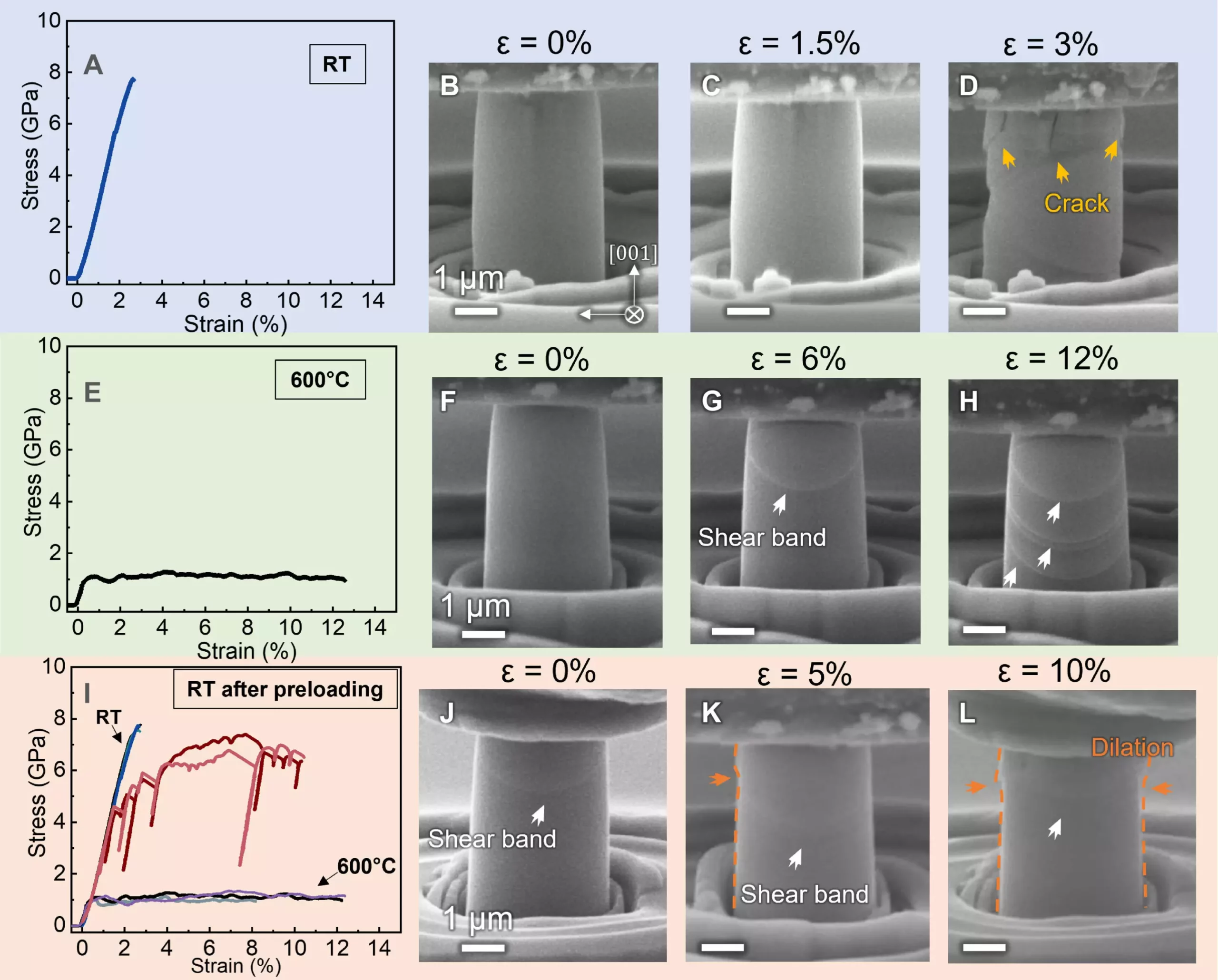Ceramic materials have long been utilized in various industries, such as aerospace, transportation, and manufacturing, due to their remarkable mechanical and chemical properties. However, one major drawback of ceramics is their limited plastic deformability at room temperature. In a recent study conducted by researchers at Purdue University’s College of Engineering, a new method has been developed and validated to enhance the plasticity of ceramics by introducing high-density defects at elevated temperatures.
Traditionally, ceramics are known for their brittleness at room temperature, which restricts their ability to be deformed without fracturing. Unlike metals, which exhibit ductility and can bend without breaking, ceramics lack the necessary defects, such as dislocations, to facilitate plastic deformation. The absence of dislocations in ceramic materials hinders their ability to undergo plastic deformation at lower stress levels, making them unsuitable for certain industrial applications.
The research team led by Haiyan Wang and Xinghang Zhang at Purdue University has devised a novel approach to improve the room-temperature plastic deformability of ceramics. By introducing high-density defects through a preloading technique at high temperatures, the researchers were able to enhance the plasticity of various ceramic materials. This innovative method holds the potential to inject ductility into ceramics, allowing them to be drawn into near-net shapes without fracturing.
Previous research conducted by Wang and Zhang focused on enhancing ceramic plastic deformability using flash sintering. While flash sintering was effective for certain ceramic materials, it was not universally applicable. In contrast, the preloading technique developed by the Purdue team can be generalized to nearly all ceramic materials, making it a more versatile approach for improving ceramic plasticity. Additionally, preloading dislocations is a more practical and scalable method for large-scale processing and treatment of ceramics compared to flash sintering.
The newly developed technique has been successfully tested on various ceramic systems, demonstrating significant improvements in deformability at room temperature. For instance, single-crystal titanium dioxide achieved a 10% strain, while aluminum oxide showed a 6% to 7.5% strain using the preloading method. Moving forward, the research team plans to collaborate with industry partners to scale up the approach for large-scale demonstrations in different ceramic systems.
The research conducted by Purdue University’s College of Engineering represents a significant advancement in the field of ceramic materials. By enhancing the plastic deformability of ceramics at room temperature, the new method opens up possibilities for expanding the industrial applications of ceramics in various sectors. With ongoing efforts to validate and commercialize this innovative technique, the future looks promising for the integration of ductility into ceramic materials, revolutionizing their utility and versatility in engineering and manufacturing.


Leave a Reply